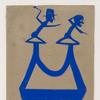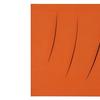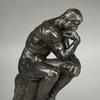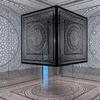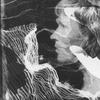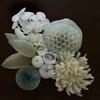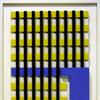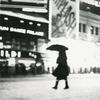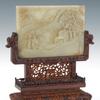London Exhibition Spotlights Great Women Artists of the Past and Present
- LONDON, United Kingdom
- /
- September 27, 2018
Juno Calypso, Juliana Cerqueira Leite, Maisie Cousins, Charlotte Edey, Barbara Hepworth, Jessie Makinson, Lee Miller, Alice Neel, HelenA Pritchard, Stephanie Quayle, Anne Ryan, Boo Saville, Hrafnhildur Arnardottir aka Shoplifter, Antonia Showering and Caroline Walker.
London's TJ Boulting will present In The Company Of, an exhibition exploring the relationship between historic and contemporary women artists, curated by Katy Hessel, founder of the Instagram-based blog The Great Women Artists (@thegreatwomenartists).
From Oct. 5 to Nov. 17, In The Company Of will showcase three historic female artists, Barbara Hepworth, Lee Miller, and Alice Neel, alongside twelve dynamic contemporary female artists. The exhibition aims to highlight the legacy of Hepworth, Miller, and Neel and how the impact of their work still resonates with artists working today. By comparing their shared artistic language and creating a dialogue between them, it will also put the contemporary artists’ work into an historical context.
“My aim with The Great Women Artists has always been to celebrate women artists from across the world working in every era across a variety of mediums. This exhibition will put the account into a real-life context, not only shining a light on some of the most exciting women working across painting, sculpture and photography today, but showing the constant conversation with the women who came before them. It is important to recognise the enduring legacy of the women who were so often overlooked by art history, and provide an alternative insight to the subject” – Katy Hessel
Hepworth, Miller and Neel are all highly influential and internationally acclaimed figures in 20th century art. Hepworth (1903-1975) was a British modernist and abstract sculptor whose career spanned five decades. Lee Miller (1907-1977) was an American photographer, working for Vogue first as a model then on the other side of the lens as war reporter, and latterly was a central protagonist of British Surrealism. Alice Neel (1900-1984) was one of the foremost American figurative painters known for her portraits of friends, family and her circle in New York. The exhibition will present a bronze maquette sculpture by Hepworth, three photographs by Lee Miller and an early painting by Alice Neel. The contemporary artists range across painting, photography, drawing, sculpture, ceramics and tapestry. Their works either indirectly reference or share an affinity with the historic artists, or are new works created through a direct interpretation or inspiration.
The form and organic structure of Barbara Hepworth’s sculptures have had a profound influence on HelenA Pritchard’s formulaic wall works and maquettes, which will sit alongside each other in a room dedicated to Hepworth’s diverse influence on sculpture today. Hepworth’s polished bronze 'Maquette, Theme and Variations’ (1970) was for a larger public work on the exterior of the Cheltenham and Gloucester building, where it still sits today. Hepworth often stated that her work was not just about abstract forms, but about relationships, between colour and texture, humans and landscape, and each other, which are of similar interest to Pritchard. Stephanie Quayle’s sculptures of the animal form allude to the relationship between humans and nature, and the innate connection between us. While Boo Saville’s colour field paintings incorporate a rich exploration of colour with an emotional intensity.
Lee Miller’s photographs often crossed over her surrealist tendencies with her photojournalistic war imagery. An image of a ‘US Army nurse drying sterilised rubber gloves, Churchill Hospital, Oxford, England,’ (1943) inspired Maisie Cousins to create a photo-collage in response, which highlights their shared incorporation of the surreal, and the motif of the hand. Juno Calypso plays with the use of masks throughout her photographic self-portraits, utilising existing beauty devices in a sinister commentary on modern female beauty ideals, and is seen here alongside Miller’s image ‘Fire Masks’ (1941) which shows the wartime devices as darkly surreal fashion accessories on models. Similarly surreal are Jessie Makinson’s fantastical figurative painting and drawing, Charlotte Edey’s mystical and dreamlike tapestry, Anne Ryan’s ceramics and Hrafnhildur Arnardottir/Shoplifter’s whimsical and playfully coloured hair wall pieces. Juliana Cerqueira Leite’s nude photo collage sits with Miller’s ‘Nude Bent Forward’ (1930) – one of three made in collaboration with artist Man Ray, with Miller often credited just as his muse or assistant – which shows the evolution of the female gaze. Miller used a model and the image was inevitably drawn into the male artist dominated surrealist fetish for creating a phallic form, in contrast Juliana’s work always uses the action of her own body in space and material, and represents an empowered exploration of the female body.
Alice Neel’s expressive and psychologically charged painting style has particularly inspired the work of Caroline Walker and Antonia Showering. A portraitist working in an Abstract Expressionist-dominated era in New York City, Neel remained loyal to her genre, painting people for who they were regardless of their economic status, whether they were from an impoverished neighbourhood in Spanish Harlem or art world stars such as Andy Warhol. The work exhibited is an early portrait from 1930 of her mother, painted at a time of great personal trauma and is indicative of the burgeoning beginnings of her artistic career. The three oil sketches by Caroline Walker feature women in service jobs, working in nail bars or hotel housekeeping, sensitively giving prominence to hard-working women behind the scenes who are often overlooked. Antonia Showering’s painting captures the ephemeral sense of memory, portraying intimate familial relationships at pivotal moments, which alludes to Alice Neel’s portrait of her mother, painted at a vulnerable time in the artist’s life.
In The Company Of highlights an important shared artistic language between these artists past and present - be it a fascination in the surreal, a sensitivity to surroundings, to materials, form or human relationships. The actions of the historic artists paved the way with their bold untethered actions to create art, that the contemporary artists continue to thrive in today.

